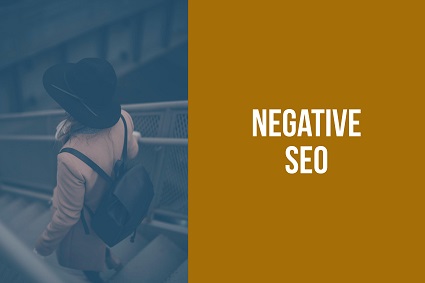Your cart is currently empty!

Negative SEO
What is negative SEO? It’s a type of attack on your website that makes you look like you’re using black hat SEO techniques to improve your rankings. For example, your arch enemy could buid lots of questionable links to your website, hack your site and delete your authority pages, or introduce duplicate content. It looks like your website is misbehaving, and Google will penalize you even though you are innocent.
These things could happen, but they are not very likely. Read on for why this shouldn’t be at the top of your priority list for your website… and how you could find yourself in trouble anyway.
Do you have an arch enemy?
Link bombing a website with hundreds of suspicious links is a lot of work. Not as much work as gaining hundreds (or even dozens) of high quality links, but it still takes some effort. Your enemy could run an automatic linkbilding program, but even that takes work, and often money as well.
A competitor who put the same amount of effort into building strong links for their own website would benefit much more from those links than from bad links going to your website. Particularly since you can use Google’s link disavowal tool to let Google know that you didn’t build those links. Google is aware of this black hat technique, has factors built into the algorithm to suss out this kind of behavior, and responds to webmasters’ concerns once they’re reported. Link bombing could only work well for websites where no one is paying attention.
So you basically need someone who hates you enough to put a lot of effort into a technique that has a low chance of success. Do you have an arch enemy? If so, try to mend fences. But most professional websites don’t have an arch enemy.
Have you done (or paid for) negative SEO?
We have only had one client with an arch enemy. We’ve had plenty of clients who inadvertently hired someone to do negative SEO at their websites… or did it themselves. We’ve seen people pay good money to linkbuilders who use black hat practices. Sometimes they do this because these bad practices can get your website a quick lift. These bad actors can report positive results to their clients and secure more money before the website suffers from penalties.
Sometimes people build bad links because they don’t know any better. We’ve also seen lots of duplicate content — words stolen from other websites and pasted onto the website of an unsuspecting site owner. Often by the site owner. Or by the intern the site owner entrusted with building a website. We’ve seen websites launched by design firms with identical content on multiple pages. We have no reason to think this is malicious, but it’s common.
These mistakes can have serious consequences, and it can take a long time to recover from those consequences. Check your website to see if you have this kind of problem going on.
What can you do?
The best way to foil negative SEO is to pay attention to your website. Share on XUse Google’s Search Console and analytics to keep an eye on your website. You’ll be able to see abnormal traffic, surprising links, and drops in rank. The sooner you catch the problem, the easier it is to fix.
This is good practice anyway. Do you know how many people are visiting your website? Do you know where they come from, which pages they visit, and how they behave once they have visited your page? This is useful information for your practice or organization. In fact, without this data you have no way of determining the value of your website and no sensible way of making decisions about allocating marketing resources or developing digital marketing strategies.
If you’re facing SEO issues, including negative SEO issues, contact us and we will be happy to help.
Comments
One response to “Negative SEO”
Thank u for such a nice article.
Digital marketing benefits businesses of all sizes by giving access to the mass market at an affordable price. Unlike TV or print advertising, it allows truly personalised marketing.

Leave a Reply